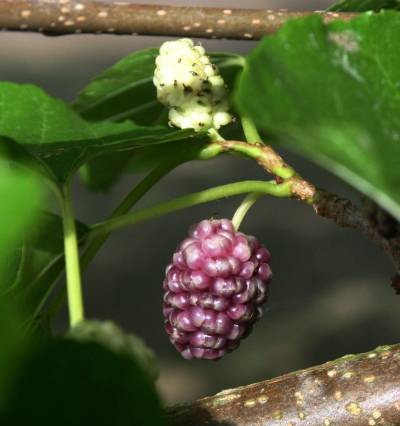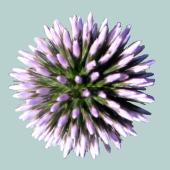Archived Page
This page is no longer maintained.
For up-to-date information please see the
new website
The Trees of the Village Green
My interest in the Village Green trees occurred as a result of a Maidenhead Advertiser article, which spoke of an event "under the oaks on the Village Green". I took a degree in botany many years ago, and although taxonomy was not my speciality, I did not think there were any oaks on Taplow Village Green. I was right and wrong; there are not oaks, but there is an oak; and in wandering around the Green looking at the trees, I was struck by their amazing variety. There are not many of them, but there are over 12 different species, one of them very unusual. They could form a very useful nature lesson for the children at St Nicolas School, especially as one has edible berries and one is so highly poisonous that anyone eating its fruit would require immediate treatment with a stomach pump at Wexham Park Hospital! The Green was originally part of Glebe Farm and had farm buildings on it near to the Church. It was purchased by Eton Rural District Council as a result of a successful campaign by local residents to prevent houses being built upon it. It is now leased by South Bucks District Council to the Parish Council, who are responsible for it. The terms of the lease are cloaked in mystery since no one can find it at the moment. However, the Parish Council cleared the land of the buildings, although much of their rubble was grassed over, which accounts for the poor state of the grass in some places. The surface was also originally very uneven, but constant mowing and some filling has levelled it out. There are two clumps of sycamore trees (Acer pseudoplatanus), one on the right of the road leading to the school, and one in the middle of the Eastern Green, which appear to be self-seeded. All the other trees appear to have been planted, many of the recent ones by the Parish Council, but this seem to have been done on an ad hoc basis rather than to any plan. If we take the Western Green first, this has only three trees. The oak (Quercus petrea) is not the English oak but the less common Durmast oak, or Sessile oak, so-called because the acorns, unlike those of the English oak, do not have stalks. There is also a copper beech (Fagus sylvatica), with its reddish copper-coloured leaves. All copper beeches are descended from a natural mutant of the common beech, discovered in a German wood more than 100 years ago. The other tree is a tulip tree (Liriododendon tulipifera), which has beautiful greenish-yellow tulip-like flowers in the spring and curiously lobed leaves. It is related to (but different from) the magnolia with its pinkish-white tulip flowers, which is also often (but erroneously) called the tulip tree. The Eastern Green has, in front of the church, a magnificent London plane (Platanus acerifolia), probably planted when the church was built and therefore about 150 years old. Next to it, along the High Street, are two lime trees (Tilia vulgaris), and another sycamore. In front of the School House is the gracefully shaped black locust tree (Robinia pseudoacacia), with its bright green pinnate leaves, and in the centre of the Green is a horse chestnut (Aesculus hippocastanum), presumably planted before it was realised what a danger conker-playing was to children. On Rectory Road is the tree which, though having very beautiful pendulous flowers and snow-pea-like pods, is a danger to children, the laburnum (Laburnum anagyroides) referred to above. There is also a silver birch (Betula pendula) with its beautiful silver bark, and a mountain ash (Sorbus aucuparia), which bears white flowers and red berries.
Finally, there is the most unusual tree of all, opposite the Oak and Saw, a white mulberry (Morus alba), a native of Northern China, which has succulent whitish-pink fruit, delicious to eat or to make into jam. The more usual mulberry (itself not very common) is the black mulberry (Morus nigra) - no political correctness in botany! - which has the familiar, dark red/black berries. Curiously, the Parish Council have recently planted another white mulberry next to it, supposedly because the original tree was dying, although it seems very healthy to me.
So there we are: the Village Green and its native and exotic trees. Perhaps the Parish Council should label them so they can be better appreciated.
John Hanford
The Eastern Green has, in front of the church, a magnificent London plane (Platanus acerifolia), probably planted when the church was built and therefore about 150 years old. Next to it, along the High Street, are two lime trees (Tilia vulgaris), and another sycamore. In front of the School House is the gracefully shaped black locust tree (Robinia pseudoacacia), with its bright green pinnate leaves, and in the centre of the Green is a horse chestnut (Aesculus hippocastanum), presumably planted before it was realised what a danger conker-playing was to children. On Rectory Road is the tree which, though having very beautiful pendulous flowers and snow-pea-like pods, is a danger to children, the laburnum (Laburnum anagyroides) referred to above. There is also a silver birch (Betula pendula) with its beautiful silver bark, and a mountain ash (Sorbus aucuparia), which bears white flowers and red berries.
Finally, there is the most unusual tree of all, opposite the Oak and Saw, a white mulberry (Morus alba), a native of Northern China, which has succulent whitish-pink fruit, delicious to eat or to make into jam. The more usual mulberry (itself not very common) is the black mulberry (Morus nigra) - no political correctness in botany! - which has the familiar, dark red/black berries. Curiously, the Parish Council have recently planted another white mulberry next to it, supposedly because the original tree was dying, although it seems very healthy to me.
So there we are: the Village Green and its native and exotic trees. Perhaps the Parish Council should label them so they can be better appreciated.
John Hanford